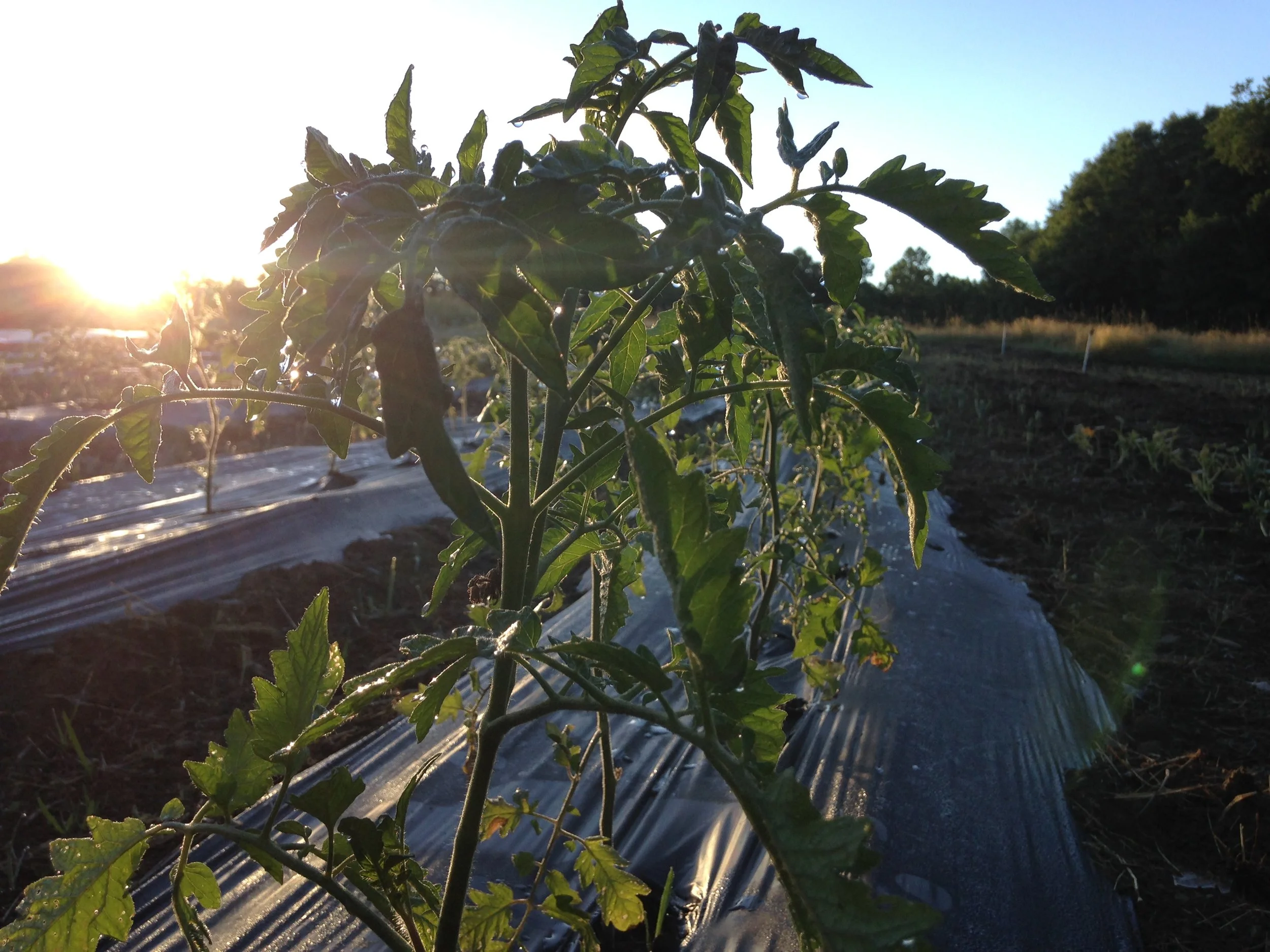It’s August, and that means harvest, harvest, harvest, and sort, sort, sort. What a difference from last year, thanks to the deer fence. And we’re LOVING the lean and lower system for the tomatoes in the high tunnels.
Weeding beans with the wheel hoe & collinear hoe
The beans in the high tunnel germinated well, and outpaced the weeds for a time. (This is likely thanks to new 1-inch water line. I’ll write about that very soon because we’ve noticed a huge difference.)
When the beans were about 2 to 3 inches tall, we pushed a wheel hoe between each row and down the pathways. This tool does a fantastic job of uprooting relatively small to medium weeds.
After working over the beds with a wheel hoe, we used a collinear hoe to get in close to the baby beans. A collinear hoe has a long, thin blade that’s collinear to the earth. It’s a precise tool, unlike traditional, heavy, clunky hoes. It is one of our favorite tools. The hoe linked above also lets you stand upright. If you have a home garden, you may want to consider a collinear hoe.
But a word of caution. While wheel and collinear hoes are wonderful tools, you have to pace yourself, just like with any garden task. If you don’t, you risk injury. Slow and steady wins the race against weeds.
We also weeded these beans at least twice by hand, mainly to pluck out stubborn grass. To keep the grass from taking root again, we remove it by the bucketful. (All those clipped bits of grass are from when Jason used the weed trimmer along the sides of the tunnel.)
In the past, we’ve basically gone through this same process only to have deer mow down every last bean. The only beans that would survive were the ones that happened to be weedy enough that the deer didn’t notice them. What a relief to go through all this work and know they’re protected in the deer fence.
~ Stella
The birds and the butterflies
The new deer fence, with its tall, wood posts and sturdy wire, is doing a right proper job of keeping deer out, but it’s welcomed a new creature in: birds.
Jason noticed their arrival first. Working in the gardens, he realized he wasn’t alone anymore. Birds used the fence posts as landing pads to dip down to the beds. And just as Jason was growing more accustomed to seeing them, they seemed to be getting more comfortable around him.
After hearing his observations, I noticed it, too. Closing up a Cat tunnel for the night, there were a half-dozen robins searching for worms in the freshly-buried potato patch behind me.
Birds aren’t the only creatures using farm airspace.
As I rolled up the sides of the Big Tunnel, this eastern tiger swallowtail fluttered in the corner. It must have mistaken my yellow glove for a flower because it wouldn’t give up trying to poke its black straw through the fabric. Safely set upon a dandelion, it got straight to work.
While the fence appears to be drawing birds in from the woodline, the farm shed has always been a prime spot for nesting. We have robins now. Mother and father robin both bring food to the babies. I watched the mother drop a worm in a baby’s beak, and as soon as that worm was down the hatch, the baby opened its mouth again. I, also having a child who is a bottomless pit, imagined that mama bird sighing as she alighted from the nest to fetch another snack.
~ Stella





